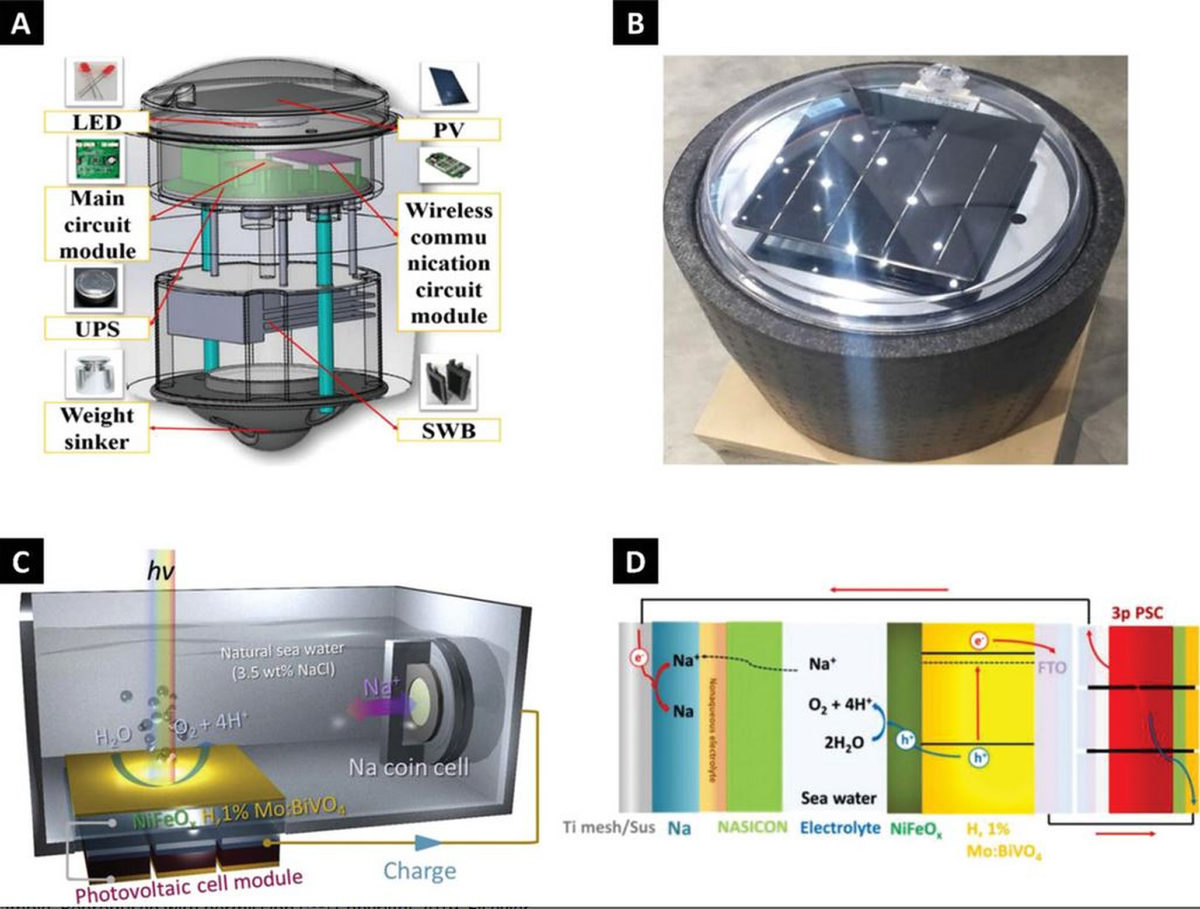Scientists from Germany's Leibniz Institute for New Materials (INM) have investigated the potential to use seawater batteries for renewable energy storage. They have also provided an overview of potential applications in desalination projects.
The scientists set criteria to evaluate the performance of seawater batteries. These considerations include capacity, efficiency, stability, performance longevity, safety, and environmental friendliness.
The researchers described seawater storage systems as a derivative of rechargeable sodium-ion batteries (NIB), which offer a series of advantages in terms of raw material costs and safety. However, they also have limited ability to hold a charge after repeated cycles of charging and discharging.
“A typical rechargeable seawater battery contains an organic electrolyte side and an aqueous electrolyte side, separated by the solid sodium diffusion membrane,” they explained. “The organic parts resemble the typical NIB with elemental sodium as an anode. If the seawater battery is contacted with seawater, the catholyte's free and abundant sodium ions can migrate into the anode compartment during the charging process.”
They looked at all components and properties of rechargeable seawater batteries, while providing an overview of all possible challenges and opportunities for them. They looked at materials, design and cell-structure adjustment.
“Conventional seawater batteries enable the storage of electrochemical energy by combining a sodiation/desodiation anode and an electrolysis cathode,” they said. “Based on the evaluation and continuous improvement of the cell parts, the electrochemical performance such as the stability, power, voltage efficiency, Coulombic efficiency, and other parameters of the resulting cell is then evaluated and reflects the current state of the art.”
The main technological hurdles to address, according to the academics, are shot lifetime, safe battery operation, low Coulombic/energy efficiency, and low stability, as well as side reactions and non-optimized cell components. They also described the most recurring issues with the anode or the stability of the membrane and cathode in saltwater, and also introduced all current approaches to improve present-day seawater battery technologies.
Popular content
The group said that the typical structure of the battery should be modified to pair renewables storage via seawater batteries with desalination.
“Unlike conventional seawater batteries, the system used stilled water as the catholyte and seawater as the feed water,” they said. “Oxygen evolution reactions occur at the cathode part during the charging process, producing protons; sodium ions insert into the hard carbon anode.”
They said seawater batteries could easily replace some seawater reverse-osmosis components and might also be useful to extract sodium ions from seawater.
“In addition, using other ion-selective membranes would enable elemental harvesting within the context of lithium extraction,” they said. “Alternatively, nonselective membranes would boost the performance in seawater because cations beyond sodium would be removed.”
The scientists presented their findings in “Dual-Use of Seawater Batteries for Energy Storage and Water Desalination.”
“The advantages of seawater batteries provide a perspective toward sustainable, environmentally friendly, performance-oriented, and cost-efficient applications at the energy/water nexus,” they concluded.
This content is protected by copyright and may not be reused. If you want to cooperate with us and would like to reuse some of our content, please contact: editors@pv-magazine.com.



By submitting this form you agree to pv magazine using your data for the purposes of publishing your comment.
Your personal data will only be disclosed or otherwise transmitted to third parties for the purposes of spam filtering or if this is necessary for technical maintenance of the website. Any other transfer to third parties will not take place unless this is justified on the basis of applicable data protection regulations or if pv magazine is legally obliged to do so.
You may revoke this consent at any time with effect for the future, in which case your personal data will be deleted immediately. Otherwise, your data will be deleted if pv magazine has processed your request or the purpose of data storage is fulfilled.
Further information on data privacy can be found in our Data Protection Policy.